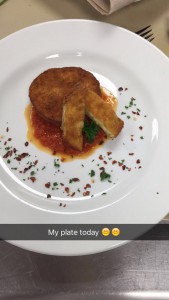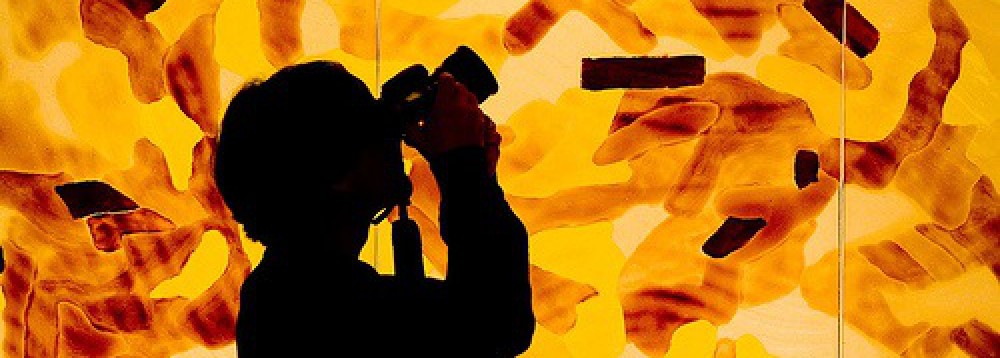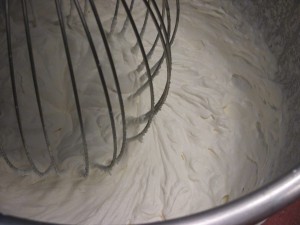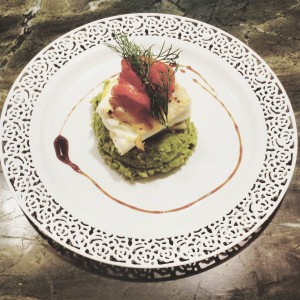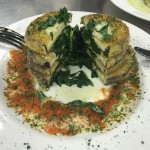In this photo I took a a picture, during the week I was chef, of us making our very own whip cream. It was fascinating the way we took heavy cream and just mixed it (whipped it) for a couple of minutes and added some other things to make it sweet, and viola you have whip cream. The smell, especially the texture I had to capture the moment, surprisingly this was taken while the whip was moving, I’m not too sure how I did it, but I’m shocked by what I captured. The texture of the whip cream looks fluffy, and smooth, but also though its airy, from in this picture it looks as if it would have a play-doh feel once you get it in your hands.
Tag Archives: homework #3
HW #3 Photographing the Texture of Food
One of the first things that you should consider when you shoot the food is that beauty is in the details.Texture plays very important rule in food photography.It impact the way food looks or tastes. I think that,People are incredibly sensitive to texture.What can texture do for a food photo? Texture can do a lot for a food photo. When we look a t food pictures. A textured background can be an important element of the overall image in food photography.Texture can enhance the quality of the image, provide it with a feeling of age, and make it interesting.
Ahmet D. Homework #3
When the texture of food comes out, there are color, size, presentation, taste and so many other things. Texture of food reminds me a eggplant all the time, eggplant can be used for the most rich dishes, it taste very rich when it cooks. People usually put some salt on it before they cook it to lower the amount of fat absorb during cooking. A couple weeks ago, me and my classmates prepared an eggplant dish, and I’ve heard from some students that they never liked the eggplant before. Once we finished the cooking, it was the time for tasting. All the dishes looked very tasty. We all tasted our dish and everybody liked it. The taste, the feeling in the mouth, the presentation was perfect.
HW 3: Photographing Texture in Food
Food photography is all about texture and color. It is crucial to have a nice “feel” when looking at the image. The human eye can look at something and see details that the camera most likely can not capture so the photographer must use lighting to bring out the texture in order to make the dish look appeling and inviting. This is a picture of a Greek Moussaka – an eggplant-based dish, often including ground beef and tomatoes with cheese on top. My friend and I took this photograph while attending Smogasburg food market in Industry City Studios in Sunset Park. Moussaka has a delicious taste to it. Very tender, juicy and smooth. Grilled cheese and tomatos on top make the dish very appertizing. 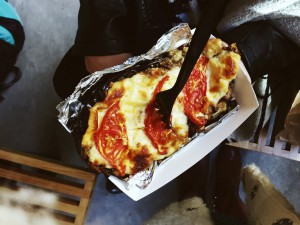
texture
- I think texture adds versatility to food and photography. It expands the creative level of a simple dish. I chose to present a simple pan fried eggplant that I made in my Culinary Arts 1 class two weeks ago. It advances the level of skill to a simple and inexpensive vegetable, by coating with layers of texture such as the smooth coating of flour, followed by a coating of thick egg wash, and then a layer of bread crumbs for a crispy , cromby and coarse exterior. Texture also aids to the appeal of the eye. By adding a variety of different textures to a plate, it helps to be photographed well.
